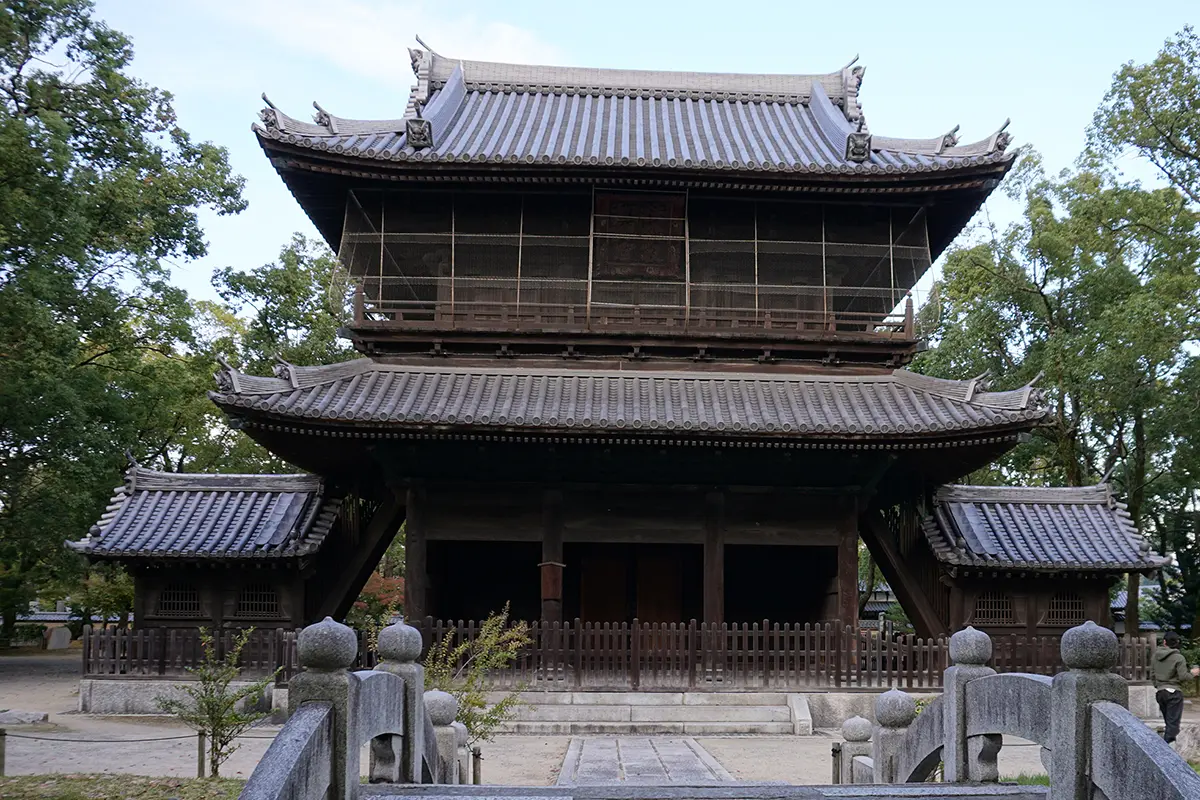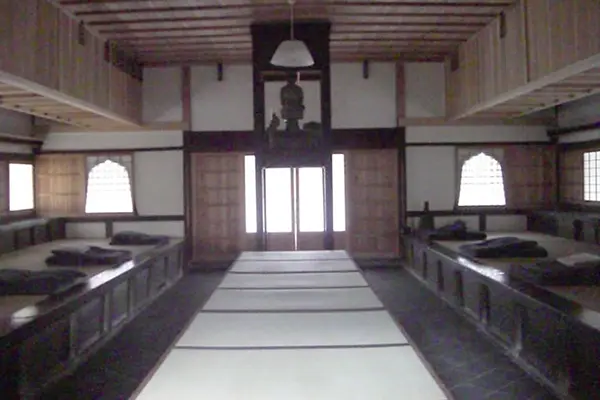
Call this number
Google Map in English
Google Maps in Japanese
Shofuku-ji is conveniently located in a walking distance from the Hakata Station. We visited there after hearing that it is the first Zen temple in Japan. They have the Zen meditation class twice a month in which we can practice and learn the meditation techniques during the 2-hour session. We could not join them as they were looking for people who could continue for at least a year. After the visit, we walked over to the Canal City Hakata. Please check out Two Perfect Days in Fukuoka to find out more things to do around the temple.

Shofuku-ji stands as a serene testament to the spiritual heritage of Japan. Established in 1195 by the visionary priest Eisai, it holds the esteemed title of being Japan’s first Zen temple, marking a pivotal chapter in the country’s religious evolution. Eisai, a monk of profound depth, sought the authentic teachings of Buddhism, leading him to introduce the Rinzai sect of Zen Buddhism to Japan after his enlightening journeys in China. This monumental temple not only embodies the essence of Zen but also intertwines with the very fabric of Japanese culture, influencing myriad aspects from martial arts to the tranquil tea ceremony.
As you meander through the temple’s tranquil grounds, the architectural marvels unfold before you, echoing centuries of history and spiritual pursuit. The Sanmon Gate, an imposing structure rebuilt in 1911, greets visitors with its grandeur, leading them along a path lined with verdant trees toward the heart of the temple. The Butsuden Hall, adorned with a celestial cloud dragon painting on its ceiling, houses sacred statues that exude a profound sense of peace, including a small wooden statue of the historical Buddha, flanked by towering golden figures.
Shofuku-ji’s layout, a harmonious blend of traditional Zen aesthetics and architectural resilience, showcases several gates, a belfry, and halls dedicated to the revered Eisai, each narrating a tale of rebirth from the ashes of history. Despite the vicissitudes of time that have seen the wooden structures reborn from destruction, the temple’s spirit remains unscathed, inviting visitors to experience a palpable sense of tranquility and reflection.
Shofuku-ji’s proximity to Gion Station makes it a conveniently accessible sanctuary from the hustle and bustle of city life. A short stroll from the station unveils this hidden gem, where the air is imbued with a sense of serenity and the echoes of Zen teachings. The temple, though reverent in its historic significance, does not permit entry into its buildings, offering instead a chance to peer into the soul of Zen through its open gates and windows, where the glint of statues and the whispers of ancient chants subtly permeate the air.
The temple’s grounds, designated as a National Historical Site, are a living museum of Zen’s architectural and spiritual legacy. Among the notable structures, the Sanmon Gate stands out with its architectural finesse, a testament to the craftsmanship of Shozaburo Iwasaki. This gate, with its intricate hip-and-gable roof and the emperor Gotoba’s calligraphy proclaiming the temple as the first Zen temple, invites contemplation on the profound depths of Zen Buddhism introduced to Japan by Eisai.
Surrounding the temple, the “Hakata-bei” walls tell tales of a bygone era, their composition a mosaic of battlefield remnants, encapsulating the turbulent history of Hakata. These walls, with their unadorned beauty, complement the Zen aesthetic, offering a silent narrative of resilience and peace amidst chaos.
Shofuku-ji is a bridge connecting the past with the present and a beacon of Zen’s enduring legacy in Japan. It is a must-visit for those seeking to immerse themselves in the profound tranquility and rich history of Japanese Zen Buddhism, offering a unique glimpse into the spiritual foundation that has shaped much of Japan’s iconic cultural heritage.
Contact us at [email protected], or click here to use our contact form.
Submission successful. You will receive a confirmation email, shortly.